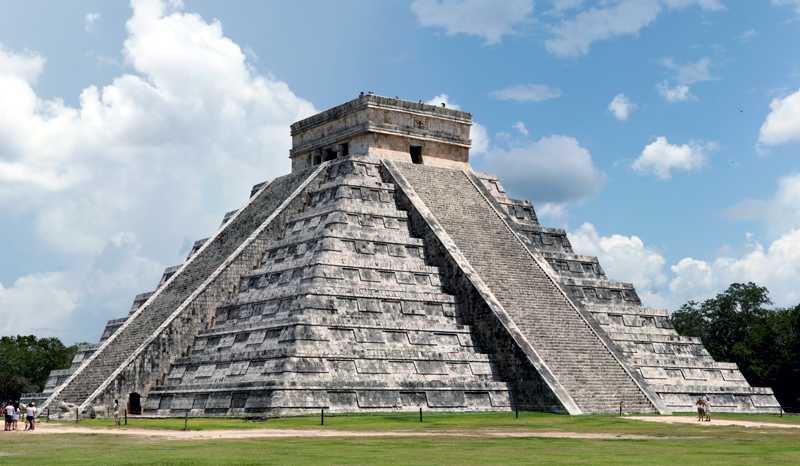Source: WTL© photo.
Notes: Looking at Chichén Itzá's principal pyramid, the so-called Castillo. It is 24 meters high with another 6 meters for the temple at the top, and the base is a little over 55 meters wide. It was dedicated to, or served, the Mayan god Kukulcán (Quetzalcóatl to the Aztecs). It was constructed by the Maya-Toltecs between 1000 CE and into the 12th century (1100s). The actual temple is the structure at the top. Each of the four sides has stairways with 91 steps like the two seen here. Note that 91 x 4 = 364; add one more for the temple platform structure at the top and the sum is 365, for the number of days in the Maya-Toltec-Aztec solar calendar. Interestingly, twice a year (i.e., at the spring and fall equinoxes), the sun in the afternoon strikes the NW corner in such a way that, as you can see by the architectural design, shadows shaped like triangles hit the NW stairway in such a way that it appears that a plumed serpent (i.e., Kukulcán or Quetzalcóatl) is crawling down the side. It is not known if the Maya-Toltec architects and astronomers and priests had this effect in mind when they designed and built the pyramid.


